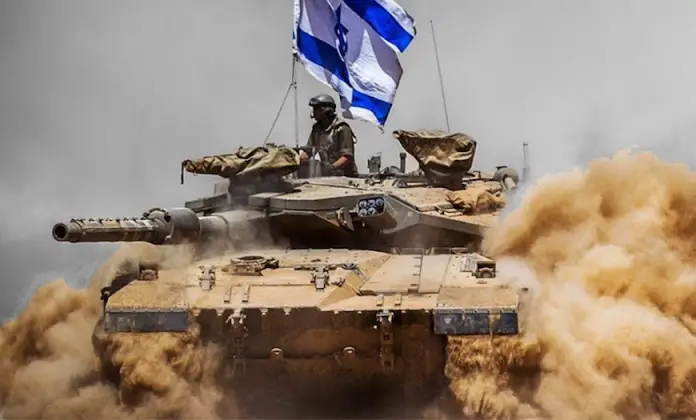<p >On November 15 the first footage emerged showing the <a href=" target="_blank">destruction</a> of a Merkava IV Barak main battle tank, a heavily enhanced variant of the Israeli Merkava design which entered service in 2023 with significant improvements to its situational awareness and armour protection levels. The vehicle was neutralised by Palestinian paramilitary groups operating in the Gaza Strip, with three of four crewmembers killed. The baseline Merkava IV which entered service in 2005 was considered to have insufficient armour protection, particularly after it took heavy losses during an <a href=" target="_blank">attempted Israeli invasion</a> of Southern Lebanon in 2006 to local Hezbollah forces. The tank class had begun development in 1999, and was intended to bridge the performance gap with enhanced variants of the<a href=" target="_blank"> T-72 tank </a>fielded by neighbouring Syria. The Merkava IV was later enhanced with the integration of the Trophy active protection system in 2009, which was one of the world’s first systems of its kind. It functioned by using a radar to continuously monitor the surrounding environment for incoming threats, and automatically tracking such threats, calculating their trajectories, and deploying protective munitions to intercept and destroy them before impact.&nbsp;</p><p ><img src=" title="Merkava IV Barak Destroyed"></p><p >The Merkava IV Barak was designed to significantly further improve survivability, and was seen as the culmination of almost five decades of work on the Merkava design. Among its most notable features were a directed energy weapon installed to intercept drones, autonomous target acquisition sensors, a 360-degree camera, and artificial intelligence systems that assist the crew in identifying and prioritising targets. The tank was designed to operate as part of a network with aerial reconnaissance drones, which would transmit real-time data to the crew on potential threats including the deployment of improvised explosive devices. The tank integrated further sensors to continuously monitor its mechanical condition, enabling predictive maintenance to reduce downtime. While the vehicle’s cost is unknown, the extent of the complex subsystems integrated have led several analysts to estimate that it is the most costly in the world, despite the Merkava design dating back to the 1970s.&nbsp;</p><p ><img src=" title="Israeli Army Merkava IV Barak"></p><p >Facing new Merkava tanks, paramilitaries in the Gaza Strip notably lack access to advanced anti-tank weapons, and rely heavily on improvised explosive devices and relatively basic rocket propelled grenades such as the North Korean RPG F7. This contrasts sharply to the other adversary with which Israeli ground forces are <a href=" target="_blank">currently engaged</a>, the Lebanese paramilitary Hezbollah. Hezbollah has demonstrated not only advanced drone capabilities, but even the deployment of non-line of sight anti tank missiles with top attack capabilities – similar to those of the American Javelin system widely used in Ukraine. In spite of their limited armaments, Palestinian paramilitaries have nevertheless taken a significant toll on Israeli armour, with several dozen Merkava tanks and&nbsp;<a href=" >hundreds more</a>&nbsp;armoured vehicles from&nbsp;<a href=" >other classes</a>&nbsp;being lost since the outbreak of full scale hostilities on October 7, 2023. Footage of successful attacks on Israeli armour have been&nbsp;<a href=" >published</a>&nbsp;multiple times, and have at times resulted in the deaths of senior officers. While Israel has been able to replenish its aerial warfare and air defence assets with the support of its Western Bloc allies, the fact that the country’s armour has not been exported, and is unique to the country, seriously limits its ability to replace such assets.&nbsp;</p>
Merkava IV Barak Down: How Israel’s Enhanced New Tank Was Designed to be Near Indestructible Before Being Taken Out

